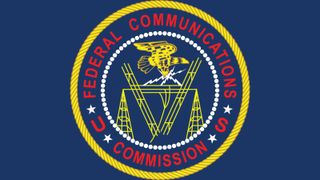FCC's 28 GHz Draws Over Triple Floor Price in Bids

With a dozen rounds under its collective belt, the FCC's 28 GHz auction of spectrum for advanced wireless has drawn $123,726,480 in bids, triple its aggregate floor price for the spectrum and up 8.63% over the round 11 total of 113,893,890.
The FCC has no revenue target for the auction, and actually can't set those unless it is raising spectrum to compensate federal users and then it has to set such revenue targets to make sure it is compensating those users for moving. It is not doing that in either this auction or the 24 GHz spectrum auction to immediately follow this one.
AS of round 12, 2,340 provisionally winning bids had been placed on the over 3,000 available licenses, with the FCC still retaining 732 of those licenses, meaning no one has bid on them, or bids have been withdrawn.
A handful of bids have been withdrawn in earlier rounds, but none in round 12.
As of Tuesday (Nov. 20), the FCC shifted from three, one-hour rounds, per day to four.
Combining the two auctions with the planned 2019 auctions of 37, 39 and 47 GHz bands, the FCC is auctioning almost 5 GHz of spectrum, which is more than all the terrestrial wireless carriers are using combined.
The FCC concedes it has never pushed so much spectrum into the market at one time before, which could mean lower prices, but the point is to get the spectrum out there "fast."
Broadcasting & Cable Newsletter
The smarter way to stay on top of broadcasting and cable industry. Sign up below
There are performance requirements to build out the spectrum, and the officials signaled the FCC has been and will be more vigorous in enforcing its construction deadlines and signaled the FCC would frown on companies sitting on their spectrum and seeking waivers at the last minute. They said the requirement for a waiver of the buildout deadlines is "extraordinary circumstances," which is a high hurdle.
The 28 GHz auction (auction 101) is offering two, 425 MHz, blocks divided into 3,072 Upper Microwave Flexible Use Service (UMFUS) county-sized licenses in the 27.5–28.35 GHz band, while the 24 GHz auction (auction 102) will offer 2,909 larger partial economic area (PEA) UMFUS licenses in the 24.25–24.45 GHz and 24.75–25.25 GHz (24 GHz) band.
Contributing editor John Eggerton has been an editor and/or writer on media regulation, legislation and policy for over four decades, including covering the FCC, FTC, Congress, the major media trade associations, and the federal courts. In addition to Multichannel News and Broadcasting + Cable, his work has appeared in Radio World, TV Technology, TV Fax, This Week in Consumer Electronics, Variety and the Encyclopedia Britannica.

